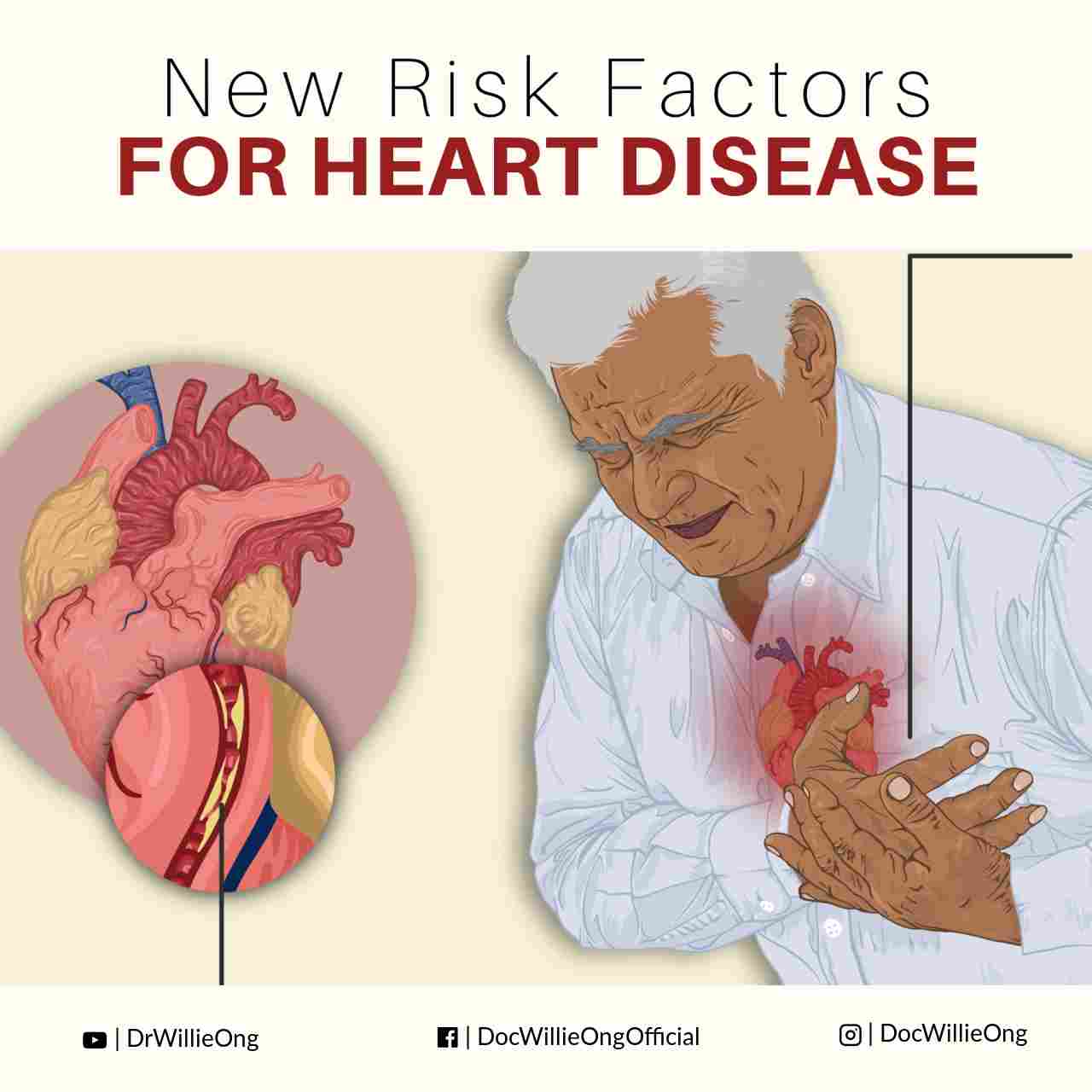Dr. Willie Ong (Internist-Cardiologist)
For those who are concerned about getting heart disease, please take note. The U.S. Preventive Services Task Force recently added new risk factors to the development of heart disease. In addition to the established risk factors like smoking, overeating, lack of exercise, high blood pressure, diabetes and high cholesterol levels, the public is being informed of these upcoming risk factors.
High-sensitivity C-reactive protein (hs-CRP blood test)
Twenty-three good-quality studies show that an elevated hs-CRP level predicts heart disease and its complications. The JUPITER megastudy (Justification for the Use of Statins in Prevention: an Intervention Trial Evaluating Rosuvastatin) shows that treating patients with high hs-CRP with the statin Rosuvastatin reduces deaths from heart disease.
Aside from drugs, smaller studies show that weight loss and exercise can also reduce your hs-CRP level. Hence for those patients at moderate risk for heart disease (male, overweight), it may be useful to check your hs-CRP in your next blood test.
Conclusion: Soon to be accepted heart risk factor doctors and patients should know about.
Ankle–brachial index (ABI) measurement
Ankle-brachial index is a simple test done by first getting the blood pressures in the ankle and the arm, and then dividing the ankle blood pressure reading over the arm reading. If the ratio is less than 0.9, meaning that the ankle blood pressure is much lower than the arm blood pressure, then that means you may have some blockage in the arteries of your legs. This is called peripheral vascular disease and is commonly seen in patients with diabetes, kidney failure and cigarette smokers.
An analysis of 16 studies concludes that a low ankle-brachial index increases your risk for heart disease and death.
Conclusion: The test is easy to perform even in the out-patient setting. A blood-thinning drug, called cilostazol, may be helpful to treat this condition.
Fasting blood glucose (FBS) level
New evidence shows that even a slightly increased fasting blood sugar (defined as levels of 5.6 to 6.9 mmol/L or 100 to 125 mg/dL), can already increase your risk of developing heart disease. These levels are labeled as impaired fasting glucose (IFG). Frank diabetes levels are levels greater than or equal to 7.0 mmol/L or 126 mg/dl.
Conclusion: Even mild diabetes can cause heart disease. Keep your blood sugar at low levels most of the time.
Teeth and gum disease
Fairly good studies show that periodontal disease is associated with heart disease. Tooth decay, gum disease and even tooth loss are now considered risk factors for heart disease. Why is this so? It’s still unclear but doctors say that inflammation in the gums may somehow trigger inflammation in the arteries. And since the mouth is teeming with bacteria, any tooth infection can cause bacteria to penetrate the blood stream and possibly infect the heart valves, a dangerous condition.
Conclusion: Although the evidence is not yet solid, we advise you to visit your dentist regularly. Brush your teeth three times a day and floss at least once a day. If you take care of your teeth, then you take care of your heart as well.
Carotid intima–media thickness (carotid IMT)
A testing machine (an ultrasound or newer CAT scans) measures the thickness of the walls of the arteries and follows this up over time. The thicker the artery wall measurement, the more cholesterol plaque is probably attached to the wall.
In two separate studies published at the JAMA (Meteor Study, March 28, 2007) and Circulation (March 31, 2008), the drug Rosuvastatin slowed down the build up of cholesterol plaques in the neck and heart arteries.
Conclusion: This test has mainly been used for research. Availability in hospitals and added cost still hinder widespread use for patients.
Coronary artery calcification (CAC) score on electron-beam computed tomography (EBCT)
Some data indicate that finding calcifications (hardenings) in the heart arteries can predict future heart complications. But so far, treatment with statin drugs has not been found to be beneficial for these patients.
Hence, the American Heart Association (AHA) does not recommend the use of this test for healthy patients. However, the AHA states that “it may be reasonable to consider” the use of this test in some patients at higher risk for heart disease.
Conclusion: This test still has unclear benefit and a possible harm. Electron-beam computed tomography uses the equivalent radiation of ten chest x-rays.
Homocysteine level in the blood
Some preliminary studies show that elevated homocysteine levels may predict heart disease. However, even if this is so, the U.S. Task Force has found no evidence that treating persons with a high homocysteine levels provides any benefit for the patient. The use of folic acid (for high homocysteine levels) has so far yielded negative results. More studies are currently under way.
Conclusion: Until we find an effective treatment, this test has limited use.
Lipoprotein(a) level in the blood
Twelve out of 15 studies have implicated an elevated lipoprotein(a) level in people with heart disease. However, the relationship is still controversial. The usual treatment for heart disease (diet, exercise, aspirin and statins) have minimal effects on lipoprotein(a) levels.
Conclusion: More studies are needed to clarify lipoprotein(a)’s role in heart disease.
Finally, let me repeat that not everyone should be tested with these newer risk factors. They may be helpful for some patients but not useful for others. Consult your doctor first.



